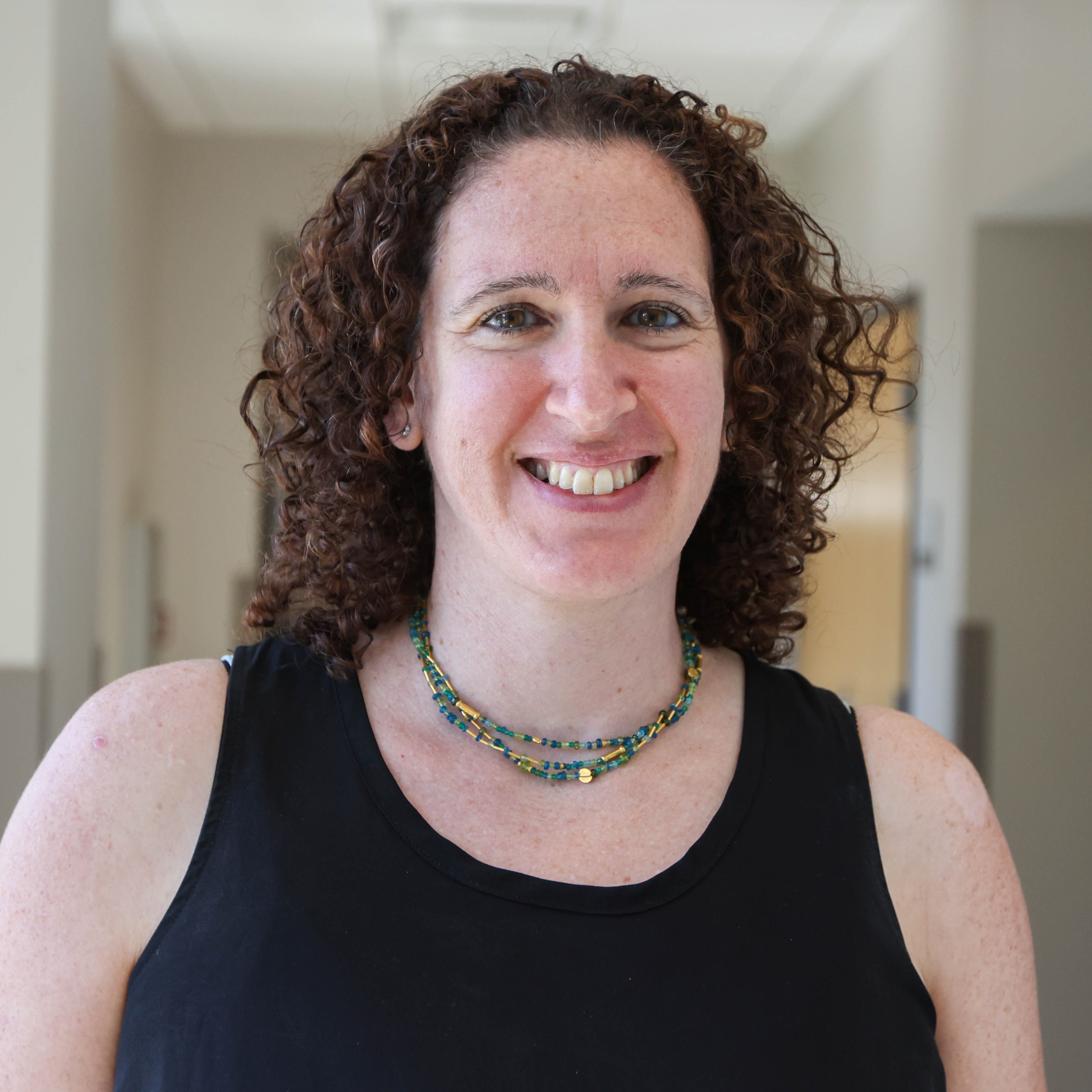Caroline Saouma

Research Interests
The increase in worldwide demand for energy, coupled with the proposed role of CO2 on global warming and the eventual depletion of fossil fuels, necessitates the development of new technologies for the efficient conversion of energy. The objective of my research program is to improve catalytic processes that are pertinent to future energy schemes. We have contributed to electrochemical, photochemical and thermal systems. This entails ligand/catalyst design, establishing how catalyst structure impacts reactivity/energetics, and determining how reaction conditions alter the energetic profile. These concepts can all be distilled down to our desire to understand how to tune the thermodynamics and kinetics of reactive intermediates, particularly metal hydrides. Given the importance of metal hydrides to many reactions, the different modes of reactivity (proton, H-atom, or hydride transfer), and the commonality of similar metal hydride intermediates in different reactions (for example, H2 evolution versus CO2 reduction to formate), understanding how to control reactivity is of great importance.
Members of my group will become proficient in a variety of techniques, for example: (i) organic/inorganic synthesis (including glove-box, Schlenk, and high-vacuum techniques), (ii) multi-nuclear and VT-NMR, IR, and UV-vis spectroscopy, (iii) electrochemistry, (iv) single crystal X-ray diffraction, and (v) analysis of kinetic data. Other techniques such as EPR spectroscopy, SQUID magnetometry, and DFT calculations may also be utilized.
- K. Schlenker, L. K. Casselmanℓ, R. T. VanderLinden and C. T. Saouma*
“Large Changes in Hydricity as a Function of Charge and Not Metal in (PNP)M-H (De)hydrogenation Catalysts That Undergo Metal-Ligand Cooperativity.”
Cat. Sci. Technol., 2023, Advance Article.
Part of the Emerging Investigators Series.
https://doi.org/10.1039/D2CY01349E - A. Cannonℓ and C. T. Saouma*
“Ru catalyzed hydrogenation of CO2 to formate under basic and acidic conditions.”
Polyhedron, 2021, 207, 115375.
Part of the Undergraduate Research in Inorganic Chemistry 2021 Issue.
https://doi.org/10.1016/j.poly.2021.115375 - K. Schlenker, E. G. Christensen, A. A. Zhanserkeev, G. R. McDonald, E. L. Yangℓ, K. T. Lutzℓ, R. P. Steele, R. T. VanderLinden and C. T. Saouma*
“Role of Ligand-Bound CO2 in the Hydrogenation of CO2 to Formate at a (PNP)Mn Catalyst.”
ACS Catal., 2021, 11, 8358 – 8369.
https://doi.org/10.1021/acscatal.1c01709 - M. Bhattacharya, S. Sebghatiℓ, R. T. VanderLinden and C. T. Saouma*
“Toward Combined Carbon Capture and Recycling: Addition of an Amine Alters Product Selectivity from CO to Formic Acid in Manganese Catalyzed Reduction of CO2.”
J. Am. Chem. Soc., 2020, 142, 17589 – 17597.
Selected by the associate editors to be included in the Early Career Investigators virtual issue.
https://doi.org/10.1021/jacs.0c07763 - F. Wang, A. Cannonℓ, M. Bhattacharya, R. Baumgarten, R. T. Vanderlinden and C. T. Saouma*
“Hydrogenation and electrocatalytic reduction of carbon dioxide to formate with a single Co catalyst.”
Chem. Commun., 2020, 56, 12142 – 12145.
Part of the 2020 Emerging Investigator Issue.
https://doi.org/10.1039/D0CC04310A - M. Bhattacharya, S. Sebghatiℓ, Y. M. Vercellaℓ, and C. T. Saouma*
“Electrochemical Reduction of Carbamates and Carbamic Acids: Implications for Combined Carbon Capture and Electrochemical CO2Recycling.”
J. Electrochem. Soc., 2020, 167, 086507.
https://doi.org/10.1149/1945-7111/ab8ed0 - M. Bhattacharya, K. Chandlerℓ, J. Gearyℓ, and C. T. Saouma*
“The role of leached Zr in the photocatalytic reduction of CO2 to formate by derivatives of UiO-66 metal organic frameworks.”
Dalton Trans., 2020, 49, 4751 – 4757.
https://doi.org/10.1039/D0DT00524J - C. L. Mathis, C. T. Saouma*
“Protic media enhanced protodeboronation for a potential H2O2-sensitive ligand system.”
Polyhedron, 2020, 179, 114377.
https://doi.org/10.1016/j.poly.2020.114377 - T. Elkin, C. T. Saouma*
“Effect of linker and metal on photoreduction and cascade reactions of nitroaromatics by M-UiO-66 metal organic frameworks.”
Inorg. Chim. Acta, 2019, 497, 119076.
https://doi.org/10.1016/j.ica.2019.119076 - C. L. Mathis, J. Gearyℓ, Y. Ardonℓ, M. S. Reeseℓ, M. A. Philliberℓ, R. T. VanderLinden, and C. T. Saouma*
“Thermodynamic Analysis of Metal-Ligand Cooperativity of PNP Ru Complexes: Implications for CO2 Hydrogenation to Methanol and Catalyst Inhibition.”
J. Am. Chem. Soc., 2019, 141, 14317 – 14328. Corrected: J. Am. Chem. Soc., 2021, 143, 11274. https://doi.org/10.1021/jacs.9b06760
- University of Utah EHS, Award of Merit, 2022
For service contributions to the Department of Chemistry’s safety - Catalysis Science & Technology, Emerging Investigator, 2022
- NBA Utah Jazz/Instructure (Canvas), Most Valuable Educator, 2022
1 of 21 educators selected for the entire state of Utah out of > 4,000 nominations; only non K-12 educator; Press: video shown at the stadium while I received my award, and final video for the program - National Society of Leadership and Success, Impact Leader Award, 2021
Student nominated - UPSTEM Fellow, University of Utah, 2021
Program to help STEM transfer students from community colleges succeed - JACS, Early Career Investigator, 2021
- Scialog Fellow (Negative Emissions Science), 2021 & 2022
- Dalton Transactions, Outstanding Reviewer, 2020
- Chemical Communications, Emerging Investigator, 2020
- NSF CAREER Award, 2020
- Ionic VIPEr Fellow, 2018
Program to help improve inorganic chemistry education nationwide
- B.S., Massachusetts Institute of Technology, 2005
- Ph.D., California Institute of Technology, 2011
- NIH NRSA Postdoctoral Fellow, University of Washington, 2011-2013


